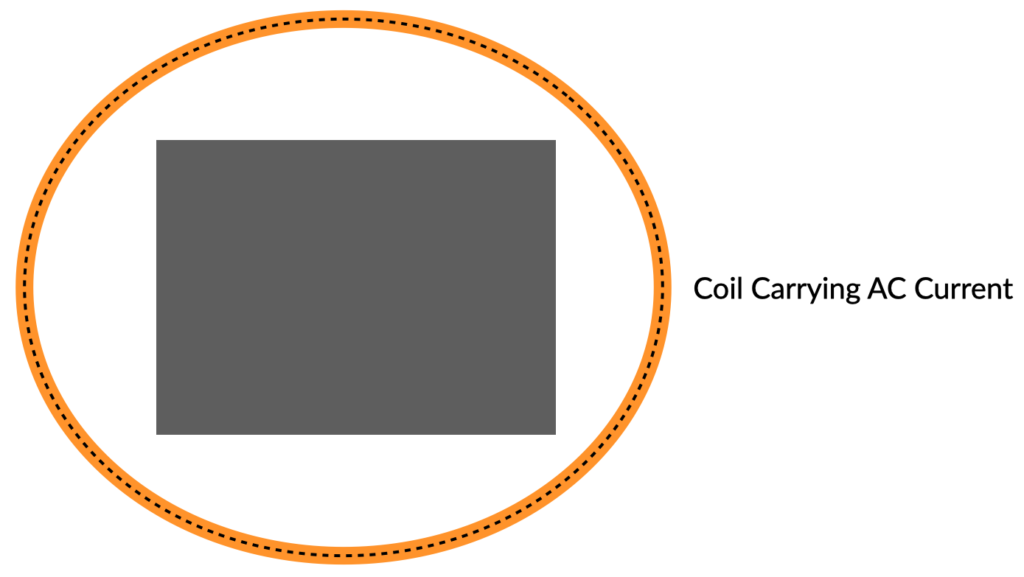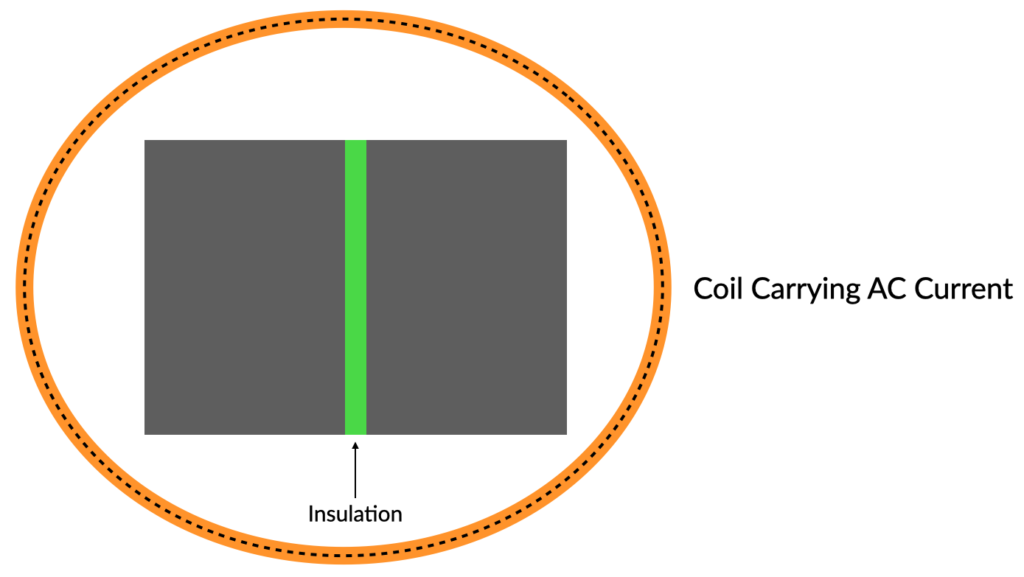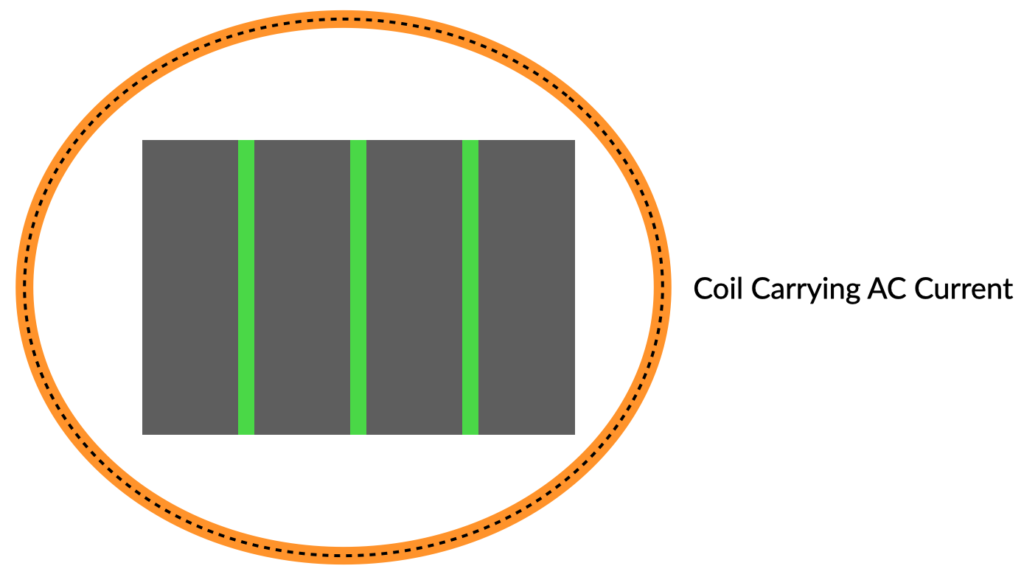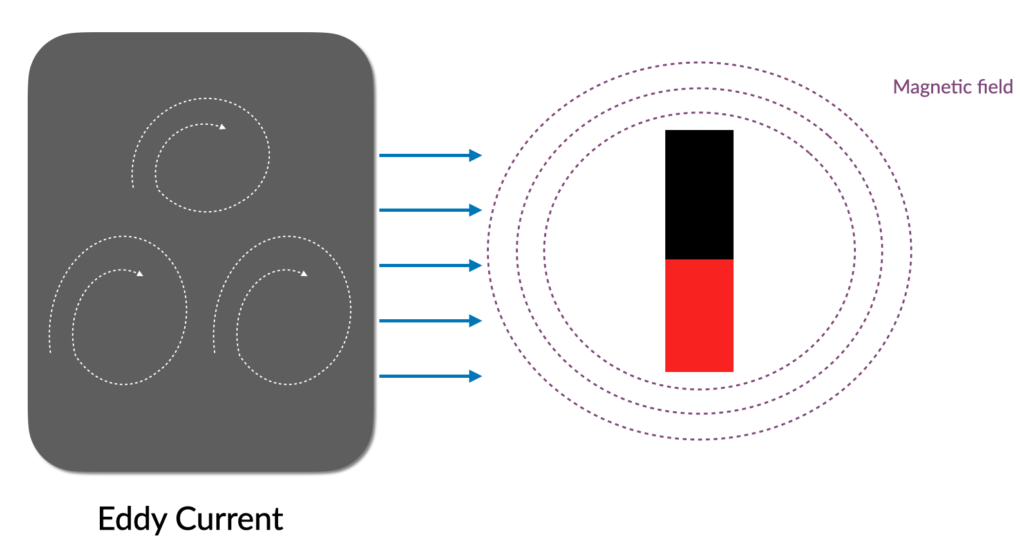What is Eddy Current & Eddy Current Loss
What is Eddy Current & Eddy Current Loss https://www.theelectricalguy.in/wp-content/uploads/2020/07/Thumbnail-1024x576.jpg 1024 576 Gaurav J Gaurav J https://secure.gravatar.com/avatar/87a2d2e0182faacb2e003da0504ad293?s=96&d=mm&r=gIn this tutorial, You’ll learn about, what is eddy current? What are the effects of eddy current? And how we can reduce eddy current loss. You’ll also get the answer of most commonly asked question I.e. why transformer cores are laminated? So, if you want to understand eddy current crystal clear, then you need to watch the video.
Before we start with what are eddy currents, it is important to understand the Faraday’s law of electromagnetic induction.
Already done watching? Then let’s understand eddy current.
What is Eddy Current?

Let’s say, I have a conductor as shown above. No current is flowing through this conductor. Now, I bring in a magnet near the conductor and start rotating it. Of course, this will produce a rotating flux. This flux will link to my conductor. And as per faraday’s law of electromagnetic induction, an AC voltage will be induced in the conductor. And if, the conductor is short circuited, current will start flowing through the conductor.
If you see, I have no intension to make any current to flow though this conductor. I want this conductor without any current. But, because of the rotating magnetic field near the conductor, current has already started flowing. And of course, this will start heating the conductor unnecessarily.

Now, let’s say, instead of conductor, a solid metal plate is there. Magnet is still rotating. And hence, a voltage will be induced in the plate, as per faraday’s law. Since, my plate is conducting, the induced voltages will circulate the current within the plate. Again, I have no intension to make any current to flow through this metal plate. But, the current is flowing.
This induced current, swirl back & forth inside the plate. This current is called as Eddy Current. If graphed, the current looks like a water eddy. Which is basically, a circular movement of water causing a small whirlpool. In simple language, this current flows in a closed loop within the conductor. And hence, it is called as eddy current.
This current is also called as Foucault current. Because, it was discovered by a French physicist Léon Foucault.
Eddy current Depends up on
Magnitude of eddy current depends up on many factors. Eddy current is directly proportional to the
- Strength of the magnet field
- The area of the plate
- And the rate of change of flux
Which means, if you increase any of the above parameters, the eddy current will increase. Similarly, if you decrease any of the above parameters, the eddy current will also decrease.
Eddy current is inversely proportional to
- Resistivity of the material
Which means, if the resistance of the material is increased, eddy current will decrease. And vice versa.
Effects of Eddy current
This eddy current can be huge, due to the low resistance of the plate. Eddy current causes I square R loss. Where, I is the eddy current & R is the resistance of the plate (which is very low). Because of the I square R loss, the temperature of the plate increases to a very high level. Sometimes, it can also go beyond the allowed limits. Therefore, the plate becomes very hot. Interestingly, all of this happening without even touching the plate.
The losses which occurs due to eddy current is called as Eddy current losses.
Eddy current problem becomes very important when an iron core has to carry an AC flux. Which is the case in all AC motors and transformers. And in such case, we definitely cannot ignore eddy currents. If it is ignored, it can cause high temperature in the transformer and AC motors. Which may damage the device completely. And hence, controlling the eddy current loss becomes very important. So, let’s see how we can reduce the eddy current loss.
How to reduce eddy current loss
Of course, we can reduce the eddy current loss by controlling the parameters which we saw above (refer : Eddy current depends up on). We can reduce the strength of magnetic field. Or we can reduce the plate area. Or may be we can vary the rate of change of flux.
But, in most of the cases, reducing the strength of the magnetic field or changing the rate of change of flux is not in our hand. And also, reducing the area of metal is also not an ideal way. For instance, reducing size of a 420kV transformer because of eddy current loss will not be wise choice. The huge size is the need of the rating. Reducing it further will not be possible.
So, how do we reduce the eddy current? Well, What kills current? Yes, resistance! And that’s our way to reduce it.

Let’s say, this a core of a transformer (as shown above), surrounded by a coil which is carrying AC current. This will produce the current in the core as we have seen. As this core offers very low resistance, it can become red hot due to eddy current. Therefore, to reduce this eddy current losses, we must increase the resistance of the core. So, let’s split this core into two parts. And let’s put an insulation between these two parts.

Now, definitely the resistance has increased. The voltage induced in each section is now one half of what it was before. And hence, the eddy current will also drop significantly. If we keep on subdividing the core, the eddy current losses decreases progressively. And that’s the reason why, core of transformer or AC motors & generators are laminated always. This is a very common question in exams and in technical interviews as well that, “Why the core of transformer is laminated?” Answer of which we just understood.

In practical, cores are made up of very thin laminations, generally of few milimeter. These laminations are insulated from each other. The insulation also avoid the the electrical contact between these laminations.
So, this is how you can reduce the eddy current loss.
Eddy current breaks
If you use the things correctly, even the bad thing becomes good. And eddy current is perfect example of that.
When an eddy current is induced, it creates its own magnetic field. And interestingly, this magnetic field opposes the main magnetic filed which created the eddy current. This is as per the Lenz’s law.

So, basically, eddy current is reacting back on the source magnetic field. This technique is used to stop the rotating power tools and rollercoasters quickly when they are turned off. This breaking method is called as “Eddy current breaks” . Eddy current breaks generally do not have holding torque, and hence, it is generally provided in combination with mechanical breaks which provides very efficient breaking.
So, this was all about eddy current.
Summary
Let’s summarise this tutorial.
- Rotating magnetic field causes current to induce in a conducting surface. This induced current, swirl back & forth inside the surface. And this current is called as Eddy Current.
- Eddy current is also called as Foucault current. Because, it was discovered by a French physicist Léon Foucault.
- Because of the low resistance of the conducting surface, eddy current can be huge. Which can make the surface very hot.
- The cores of transformer, AC motors & generators are generally laminated to avoid the eddy current losses.
- Magnetic field produced by the eddy current opposes the source magnetic filed. And hence, eddy current is used to stop rotating power tools.
Gaurav J
Electrical Engineer. Content Creator. Currently working with a High & Extra High Voltage Switchgear Industry.
All stories by: Gaurav J